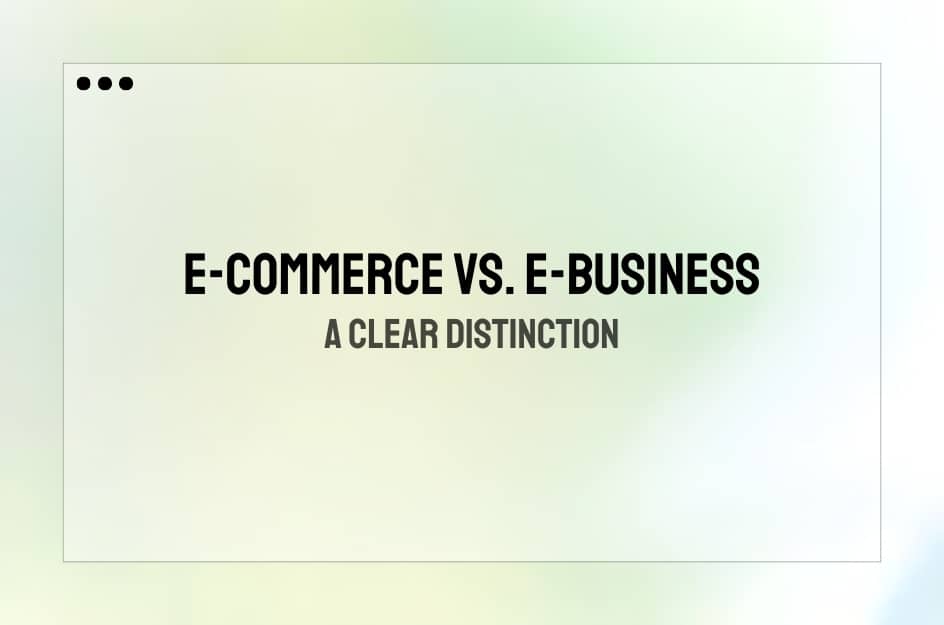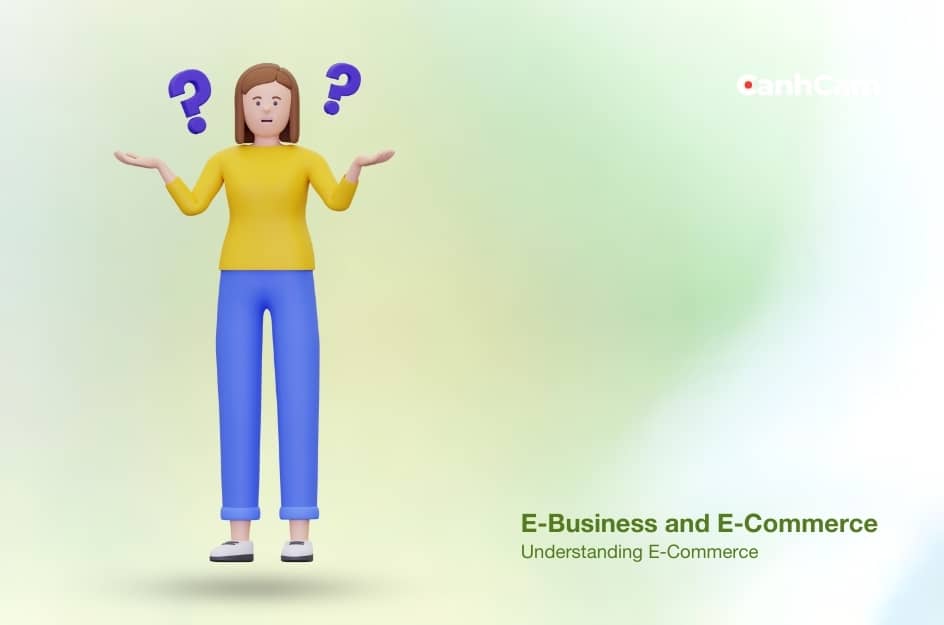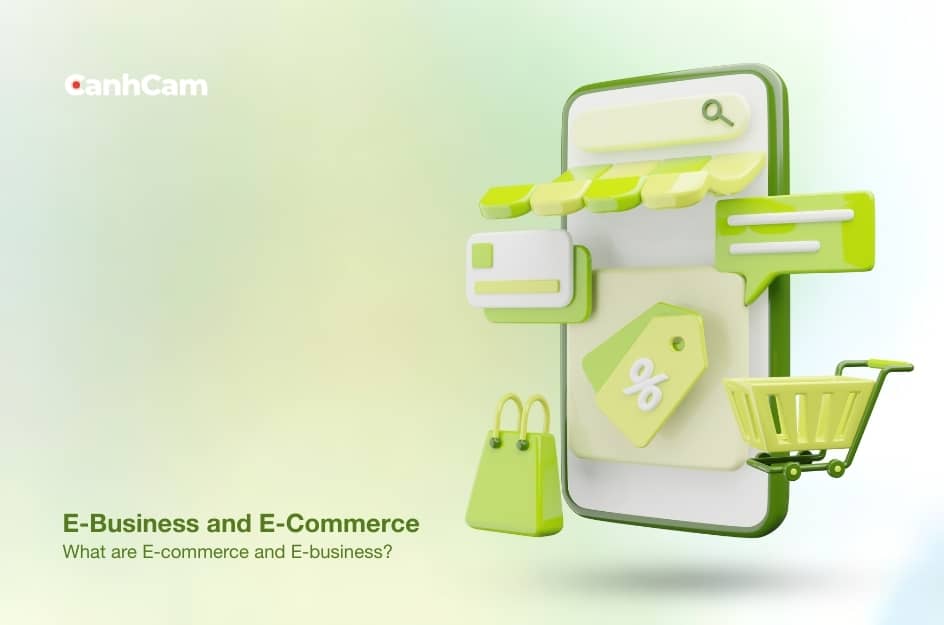As a best online seller with many years of experience, two terms you need to know in the world of online selling are Ecommerce and E-business. Until now, many people consider these two terms synonymous. If they weren't in the online market it would be difficult to distinguish between the two terms.
But for you, if online sales success is important for your business, you should know the difference between these two terms and when each should be applied.
However, apart from the common fact that it operates via the Internet, e-commerce, and e-business are two distinct ways of doing business. To understand how using either can help grow your operations, Check out some differences:
What is The Difference Between E-commerce & E-business?
After knowing both terms intimately, we can comfortably answer the question: what is the difference between e-commerce and e-commerce?
Here are the differences between the two terms apart:
E-commerce and E-business
E-commerce (Electronic Commerce) is all about buying and selling things online. It includes shopping, banking, and paying bills over the internet. Did you ever buy something online? That's e-commerce, it can take place between businesses (B2B), between businesses and consumers (B2C), between consumers (C2C), and between consumers and the government (C2G).
Now, e-business (Electronic Business) is a bit different. It's not just about buying and selling. It covers everything involved in running a business online, like customer service, marketing, and managing the supply chain. So, if a company does everything online, that's e-business.
Visit our services: Custom Web Development Melbourne

E-commerce is a subset of a superset of e-business
Comparing the two terms, it is correct to say that e-commerce is a subset of e-commerce. E-business incorporates electronic business transactions over the Internet or online, which is similar to the e-commerce aspect.
Types of Online Activities
E-commerce involves businesses and customers conducting business transactions online. On the other hand, e-commerce involves conducting business transactions online, obtaining raw materials, and educating customers. Also, in e-commerce, there is a monetary transaction limit. However, there is no monetary limit to the transaction on e-business.
Main benefactor
The person who benefits the most from e-commerce is the customer making the purchase online. However, there is a wide variety of people who are the main benefactor of e-commerce. This includes customers, business partners, Suppliers, etc.
Internet use
From the above explanation, e-commerce is electronic commerce that occurs only over the Internet. However, in e-commerce, business processes can take place both online using the Internet, intranet, and extranet electronic networks and offline.
Requirements
E-commerce requires a business or customer to have access to a website. It depends on the type of e-commerce business model you are running on. However, there are e-commerce platforms such as eBay, Seal, etc., which provide such templates. On the other hand, e-commerce requires businesses to access a website. Also, E-commerce includes good customer relationship management and business resource planning for the effective management of online business.
To make it easier for you to follow, we have a comparison table below:
| Feature | E-Commerce | E-Business |
| Focus | Buying and selling goods/services online | Digitally managing entire business operations |
| Examples | Online retail stores, marketplace platforms | Online payment systems, inventory management systems |
| Scope | Limited to online transactions | Includes all digital aspects of business operations |
| Objective | Increase sales and reach more customers | Streamline processes, improve efficiency |
| Interaction | Mainly customer-business transactions | Involves both internal and external operations |
Types of Ecommerce by Revenue Model
So, when we talk about e-business, it's not just about buying and selling stuff online. It's actually about everything a business does on the internet, like marketing and customer service. Now, when it comes to making money online, we use different methods, like ads or subscription fees. And guess what? These methods work for both e-commerce and e-business. Pretty exciting, right? By using these money-making tricks, businesses can grow and succeed in the online world.
Read more: D2C Ecommerce - What is Direct-to-Consumer & How to Get Started?
Dropshipping
Dropshipping allows businesses to sell to consumers without having to take care of production, inventory, or shipping tasks.
In this type of e-commerce, you work with a third-party wholesaler and market their products online. When someone places an order, you ask the supplier to deliver the item to the buyer. If the sale is successful, you will receive a share of the profits.
This method generally has low start-up costs. To get started, all you need is a website and a partnership with a wholesaler. It is possible to access suppliers on dropshipping directories like SaleHoo and Sprocket.
That said, not being able to check the condition of the item before sending it to the customer is a common problem. Additionally, competition can be tough for companies selling a common product.

Wholesale
A wholesaler buys goods in large quantities from manufacturers and resells them to retailers.
As they buy the items in bulk, they can get a discount from the supplier. To make a profit, he will sell the products at a higher price. Items are stored for sale to consumers.
A wholesale business usually needs warehouse space to store items. The sales process can take place on one's website or a marketplace like Amazon, Alibaba, or Faire.
Although wholesale generally falls under the "business-to-business" category, some suppliers are open to selling directly to consumers.
Private Labelling
A private label company works with a manufacturer to create a product using their brand. The company will check the characteristics of the item, including its material, function, and packaging.
One of the advantages of private labelling is that the product can be unique from other products on the market. That said, it is a good idea to research the manufacturer first to determine if they are capable of meeting your requirements.

White label
In white labelling, a company purchases a line of ready-made products from a manufacturer and applies its brand to sell them.
Unlike the private label model, the company has no say in the manufacturing of the item. However, due to this lack of involvement, the production process is generally faster and more affordable. Once the items are ready, the company stores them on its premises.
As with drop-shipping, competition can be intense if you're selling a popular product at a low price.
Subscription service
In this model, the company provides a product or service regularly to a consumer in exchange for periodic payments – usually weekly, monthly, or annually.
Subscription services can be classified into one of the following types:
- Access. Customers can use a premium digital platform for a regular fee. Some companies offer free access (freemium) with limited features to give potential subscribers a taste of the service.
- Curation. The company customizes a collection of products based on the buyer’s preferences. In many cases, the individual can try the item on and purchase it to keep it. If it doesn't suit him, he can send it back.
- Restocking. This subscription generally concerns everyday consumer goods that people buy often, such as groceries. A business automatically replenishes these items to the customer based on their order frequency preferences.
This type of e-commerce model is increasingly popular, with more than half of customers using multiple services. The most cited reasons are personalized experience, convenience, and value for money.
Conclusion
Understanding e-commerce and e-business is crucial for succeeding in the online business world. By using digital tools to connect with customers, work efficiently, and come up with new ideas, businesses can grow and stay successful. It's like having a map for navigating through all the changes and finding ways to improve.

F&Qs: All about E-business
1. Does e-commerce belong to e-business?
E-commerce means buying and selling stuff online, like clothes or books. It's a piece of e-business, which is all about doing business electronically.
2. Is Amazon only an online store?
Amazon is mostly known as an online store, which falls under e-commerce.
3. How is e-business different from M-commerce?
E-business is about buying and selling things online, using the internet. M-commerce is a part of e-commerce, specifically focusing on buying and selling through mobile devices like phones or tablets.

